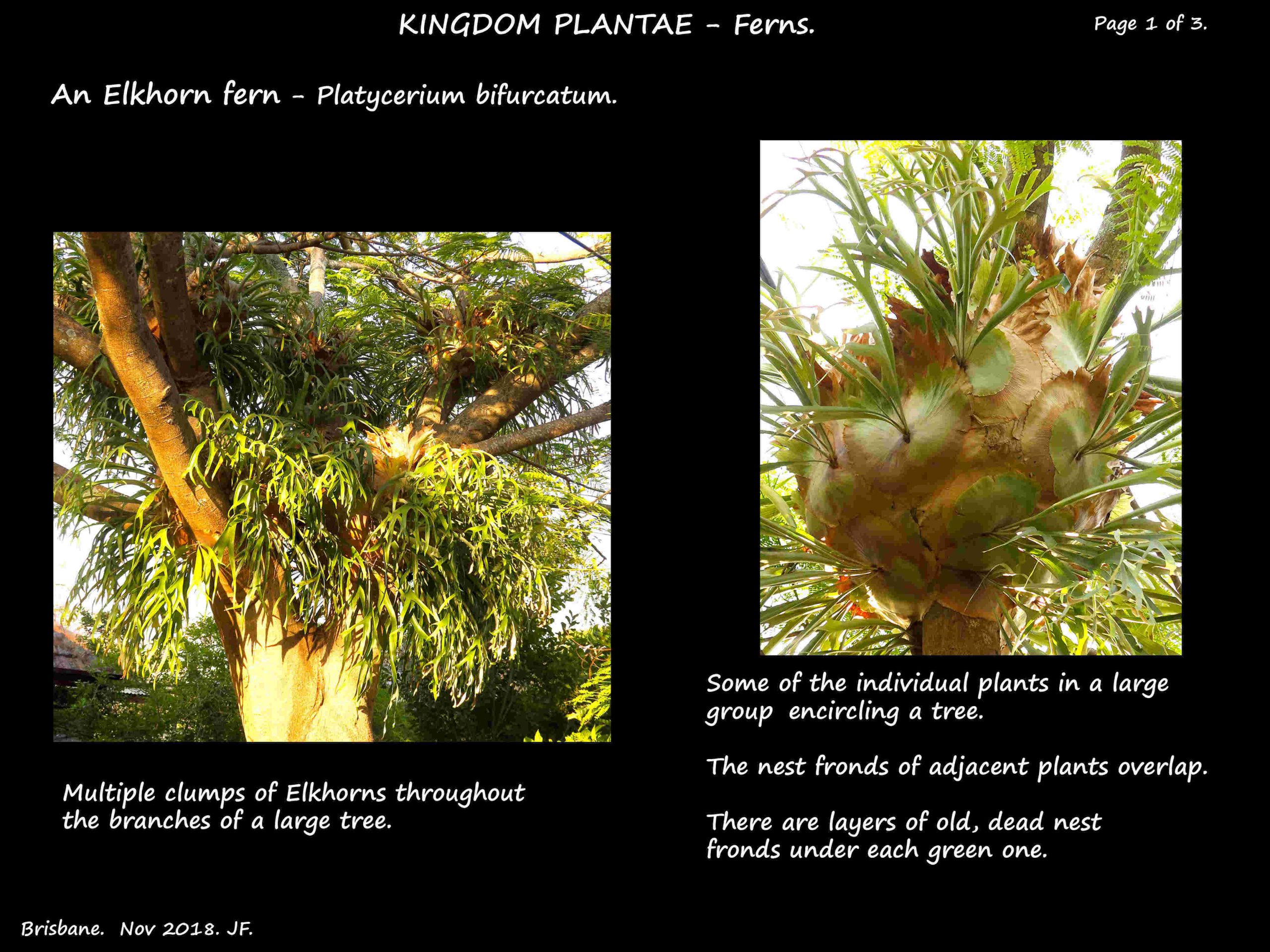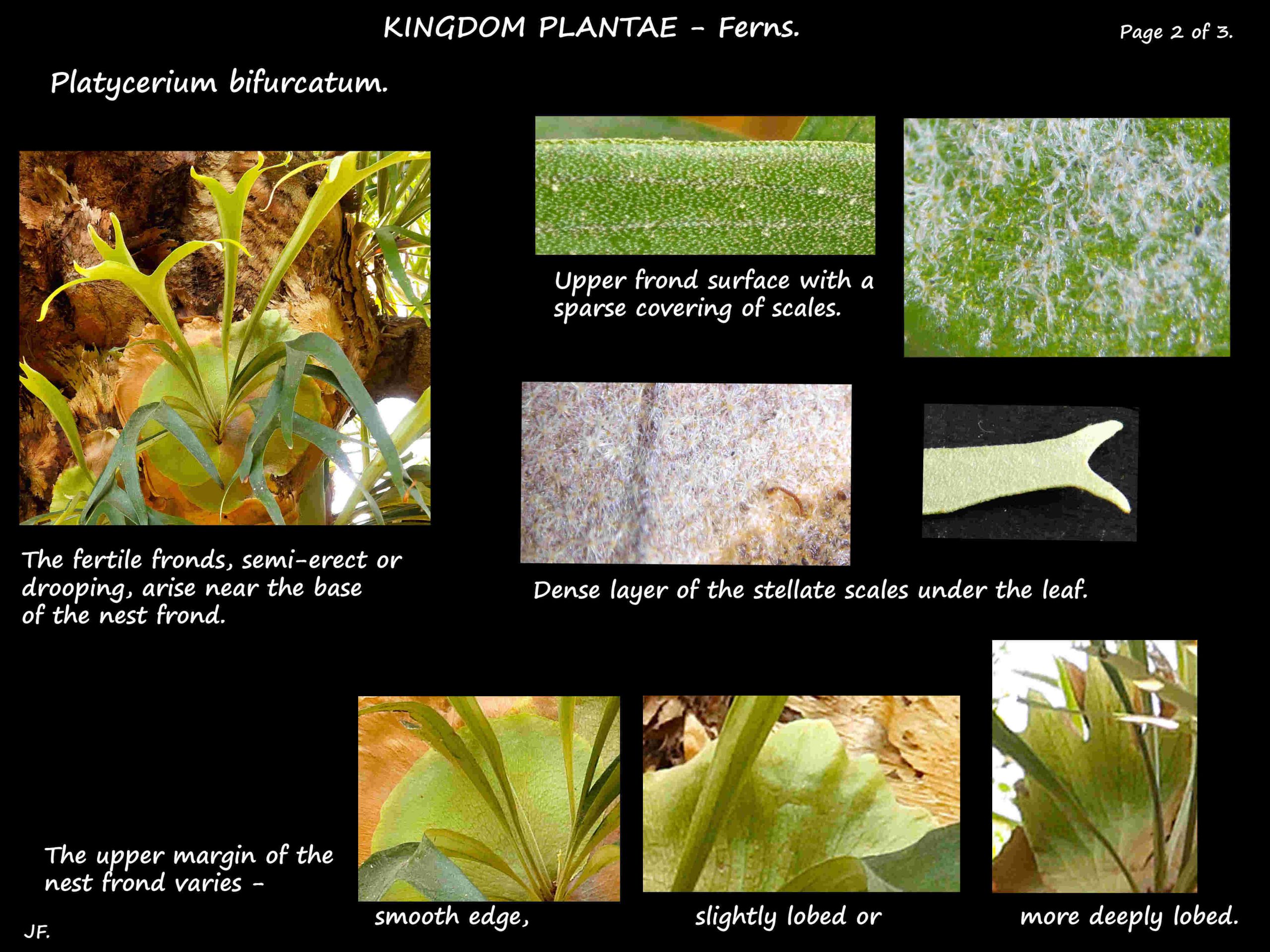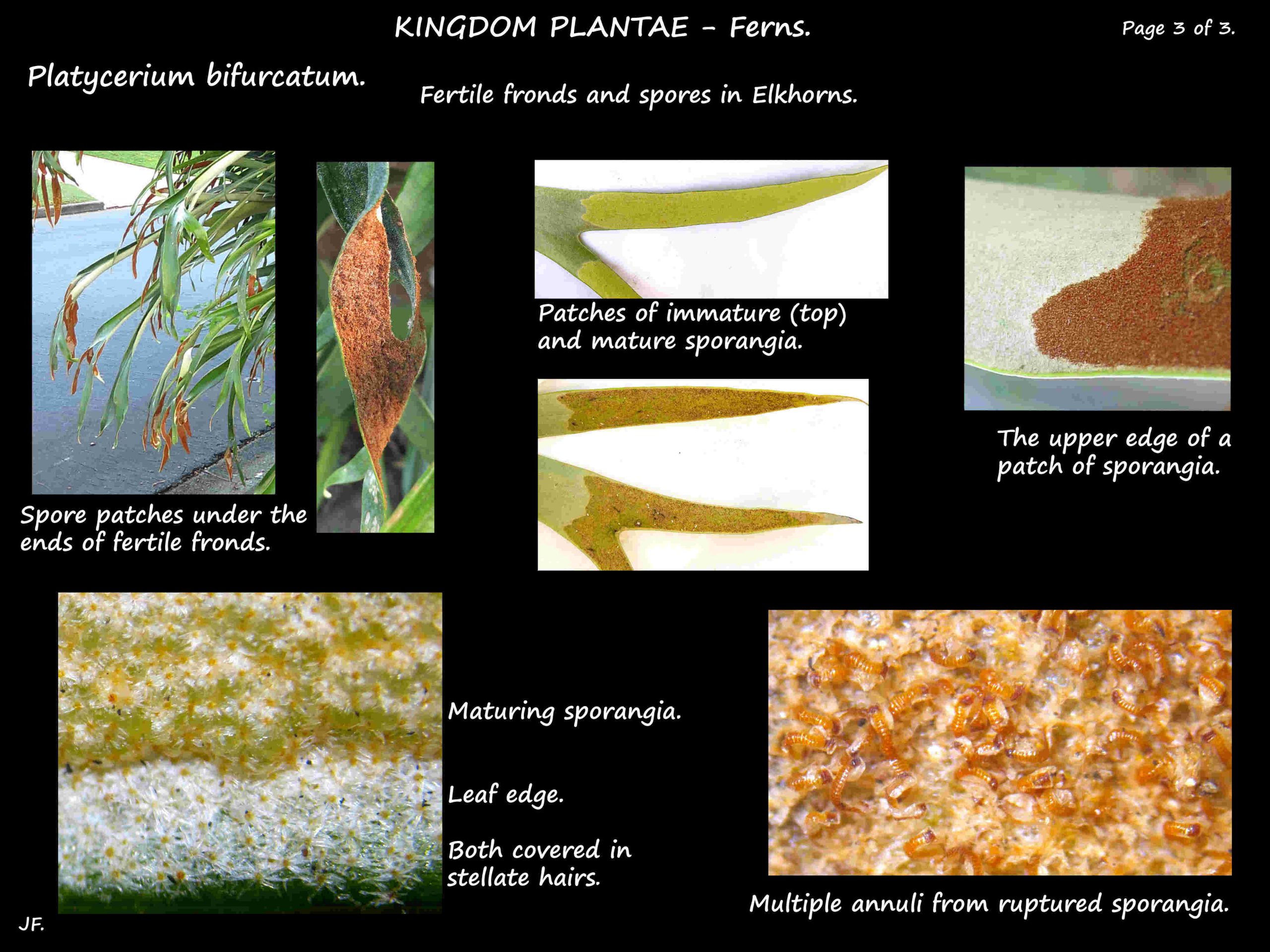Platycerium bifurcatum – Elkhorn Fern.
In some places it is known as the Common Staghorn which can be a bit confusing.
There are numerous hybrids and cultivars of P. bifurcatum which combine features of both parents.
An evergreen, epiphyte fern growing mainly on trees where it can form huge masses encircling the trunk.
Each colony is composed of a few to many small plants.
Nest fronds are roughly circular, 30-40 cm across and overlap adjacent ones.
Their lower part is tightly attached to the substrate and protects the rhizomes and roots.
The upper margin can be almost smooth, shallowly or deeply lobed with each lobe being forked up to 3 times.
The lobes project forwards to trap water and organic debris.
New fronds replace the old, brown ones yearly.
Fertile fronds are grey-green, leathery, up to 1 m long and project out then droop.
They have a narrow base and each divides up to 5 times.
The first fork is usually at, or below, the middle of the frond.
There are prominent veins on the upper surface of the fronds.
The upper surface is green with scattered stellate hairs and the underside is a grey-green with
an often dense covering of hairs.
Fertile fronds can live up to 3 years.
Brown areas of sporangia are found on much of the undersurface of the terminal lobes but
sometimes cover more extensive areas.
New plantlets are produced at the edges of the nest leaves.
J.F.




